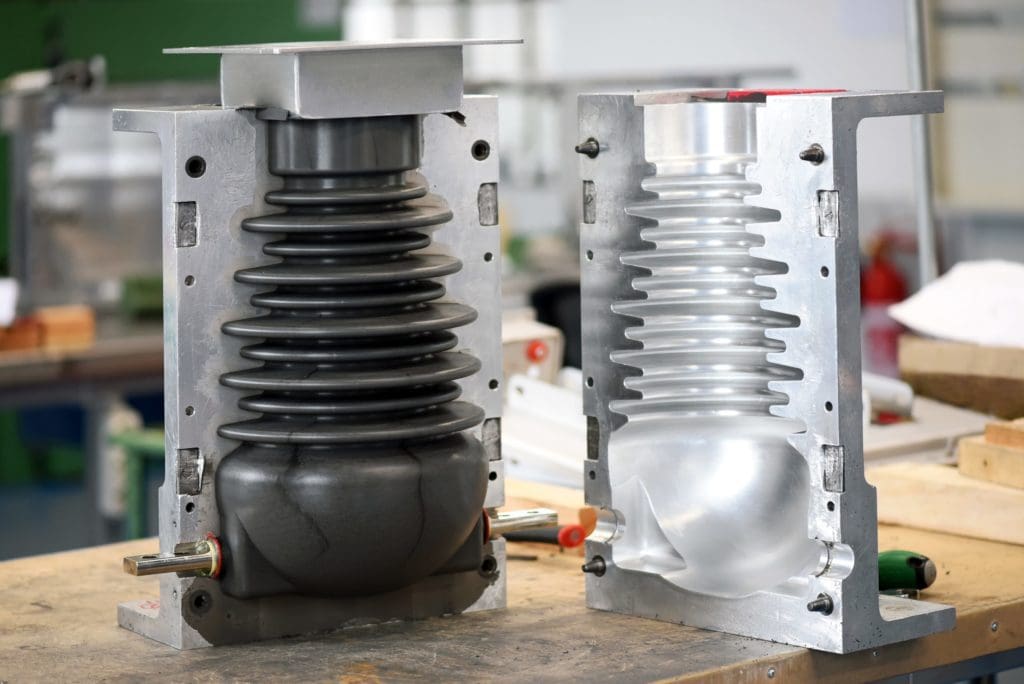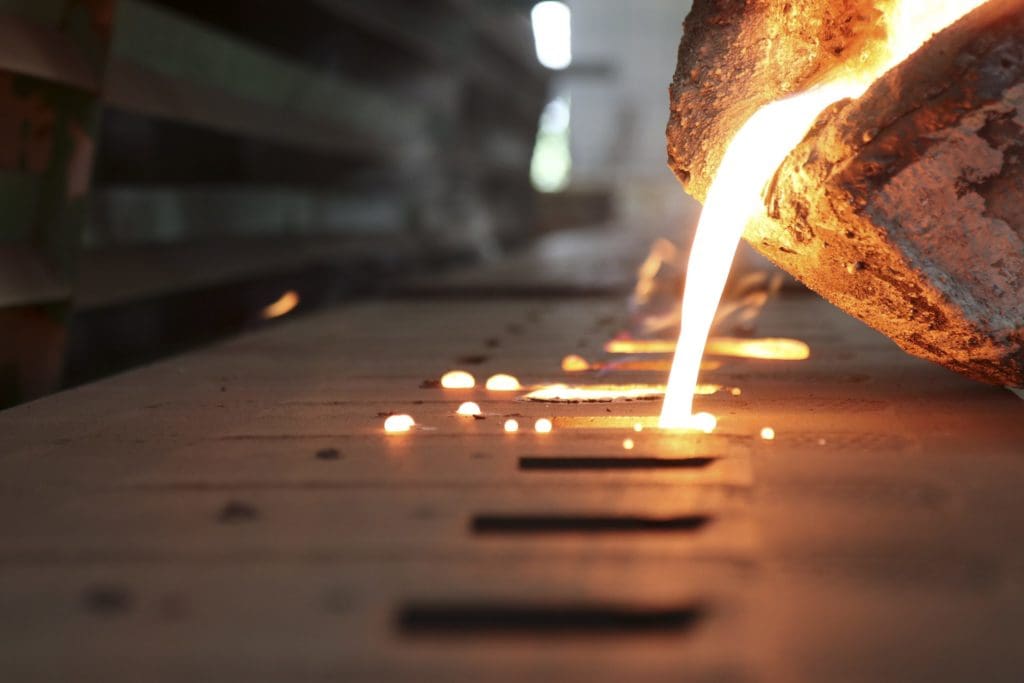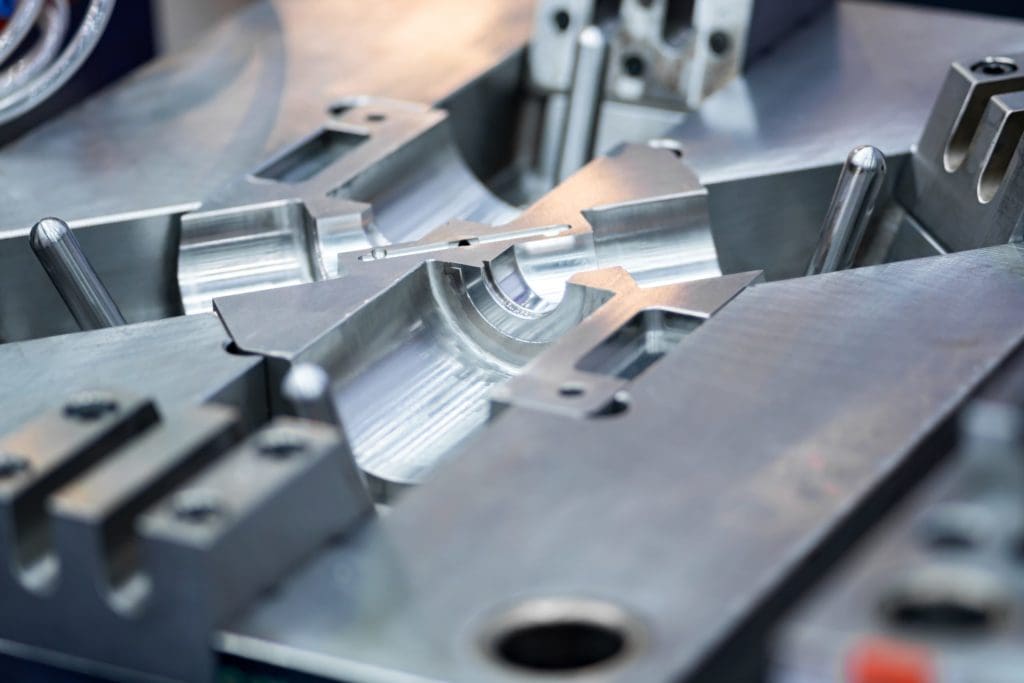Shortly after men started using tools, they found the need to recreate certain items repeatedly. Doing this by hand is repetitive and redundant. The answer they found? Metal casting using molds shaped like the part they want to replicate.
Metal casting goes as far back as the Bronze Age, where stones were used as molds to produce spear tips. Mold casting for metals, ceramics, glass, and plastics is a manufacturing process used to create the ordinary and complex objects that surround us in our everyday life.
Typical uses for today’s molds include molded furniture, molded household goods, molded cases, and structural materials. These are integral parts of our everyday life.
So… What happens when a mold is worn or damaged? How can you repair it?
VRC’s Cold Spray System is ideal for repairing industrial molds. Whether you need us to come to you or purchase your own VRC Cold Spray System, mold repairs are simplified. Contact us today for your quote.

What Exactly is Molding?
Mold manufacturing is the process of shaping liquid or pliable raw material using a rigid frame. This frame is called a “mold.”
Each mold is generally a hollow cavity receptacle, commonly made of metal. For casting, liquid plastic, metal, ceramic, or glass material is poured into it to create the desired shapes. For molding (such as fiberglass shapes), the material is laid up and pressed into its final shape.
In most cases, the mold design comes from the initial pattern or template of the final object. The mold’s main objective is to reproduce multiple uniform copies of the final product.
Manufacturers achieve the final configuration by allowing the liquid to cool and harden (“set”) inside the mold. To remove the mold, manufacturers use a release agent or ejection pins.
What are the Various Types of Molding?
Casting
Casting is a basic molding process. The raw material is heated, turning into a fluid, and then transferred into a mold. It is then allowed to cool, and the mold is removed.
A mold is the counterpart of the cast. A very common molding process uses two molds, each creating half of the desired object called bi-valve molding.
For more complex parts, articulated molds have multiple pieces that form the mold and then pull apart to release the finished casting. Articulated molds are more expensive but necessary when the casting shape has complex angles and overhangs.
Piece-molding uses a larger number of different molds, each creating an individual piece of a complicated object. Piece-molding is generally only used for larger, more complex, or more valuable items.
Injection Molding
The process of injection molding creates high-quality, detailed, three-dimensional objects for commercial reproduction. Injection molds are very expensive and are mostly used for high-volume manufacturing.
The molding process begins by melting the raw material in a hopper. It is then injected into a tightly closed, chilled mold and quickly takes the desired shape. Once it has completely cooled and set, manufacturers release the object by opening the mold.
So where may you have seen products that use injection molding? Right in your very own home! Injection molding creates yogurt pots, butter tubs, toys, and plastic bottle caps.
Blow Molding
Blow molding is a manufacturing process for making items such as piping and milk bottles. The raw material is heated until molten and injected into a cold, or chilled, mold.
The mold has a tube set within, which has a particular shape when inflated. So, while the material is still molten, the air is blown into the tube.
The desired shape forms around the tubing. It is then left to cool and finally it is removed from the mold.
Rotational Molding
Toys, plastic barrels, shipping drums, storage tanks, and some consumer furniture are examples of rotational molding products.
To make the object, manufacturers coat the inside of a mold.
Two mechanical arms hold the mold in place. The arms then rotate the mold constantly, at the same level, while molten material is placed inside. As it turns, the inside of the mold creates a new hollow object from coating itself.
Compression Molding
Compression molding is the most labor-intensive molding process.
It is mainly used for large-scale productions and not for mass production. A good example of the use of compression molding is for boat hulls and car tires.
How does compression molding work?
Compression molding works much like injection molding, where your desired product forms around something else within a mold. But with compression molding, your raw material is poured into the mold.
Next, manufacturers press a second mold into the material within the first one that was created. Compression molding squeezes the material into the desired shape before being left to cool and removed from the mold.

Repairing Industrial Molds
The timely repair of damaged surfaces can significantly increase the useful life of industrial molds.
Most industrial molds are constructed from tool steels or crafted from stainless steel, aluminum, or alloys.
The major causes of mold damage are high potency thermal shocks, mechanical strain, and corrosion. Other causes include faulty design, defective material, mishandling, and force majeure from accidental conditions.
Damage appears through heat checking, wear, plastic deformation, and fatigue.
Traditional repair methods for molds include using gas tungsten arc welding or electro-spark. However, the cold spray technique is quickly becoming popular, depending on the material.
Cold spray, or “supersonic particle deposition,” is a very attractive repairing option for many reasons. These include:
- No heat-affected zone
- No oxidation
- No alloy decomposition
- No combustion product entrapment
- Minimal masking requirements due to focused particle spray path
- High-strength coating
- Portable and mobile
- No deposition thickness limit
- Lack of toxic fumes
- Precise temperature control
- Hand operable
Cold spray technology uses an electrically heated high-pressure gas, such as nitrogen or helium, to accelerate metal powder for particle adhesion.

Where Do Mold Repairs Have To Happen?
The VRC Cold Spray System is ideal for repairing industrial molds. Whether you need us to come to you or you purchase your own VRC Cold Spray System, repairing industrial molds is made much easier. Do not hesitate to contact us today for your quote.


